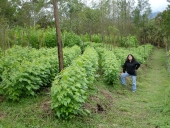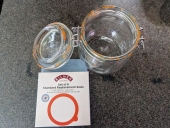



r ranson wrote:There are lots of other ways to have a low-water clean. I think the Romans use to use olive oil and a scrappy stick. Other cultures enjoy a sauna style. Some scrub with rough towel and others sand.




r ranson wrote: Apparently, it was trying to prove that people who grew up with headphones, especially ear buds, had increased untangling abilities over previous generations.
Steve Holder wrote:
Obviously heat is required for the gas monkeys to brew. Is below ground better. Could a heat belt like you use for beer/wine brewing be used.

Suzanne Jabs wrote: I found that the rubber rings have lasted me through 5 years or so for the most part.

Bess Saunders wrote: I also found these jars in my recent search for Kilner replacements:
https://www.pearljars.com/en/products/canning-starter-kit?pr_prod_strat=e5_desc&pr_rec_id=976974733&pr_rec_pid=8586653663567&pr_ref_pid=9473972142415&pr_seq=uniform
